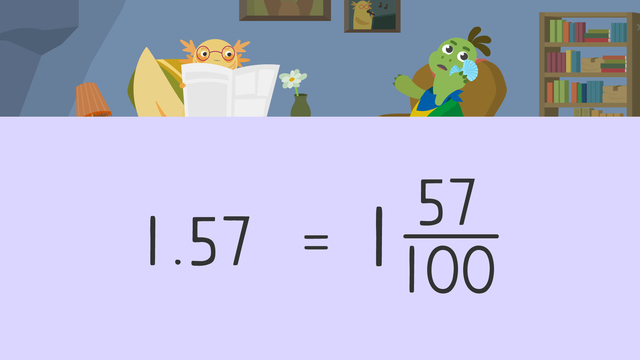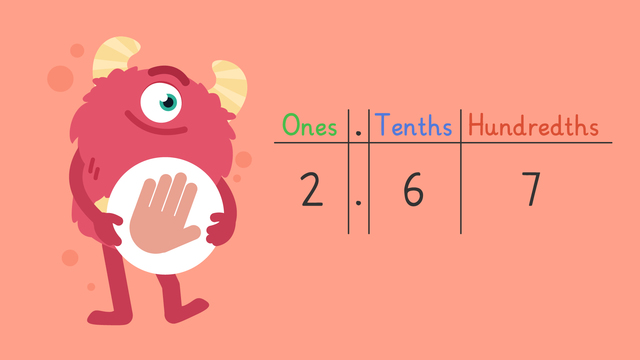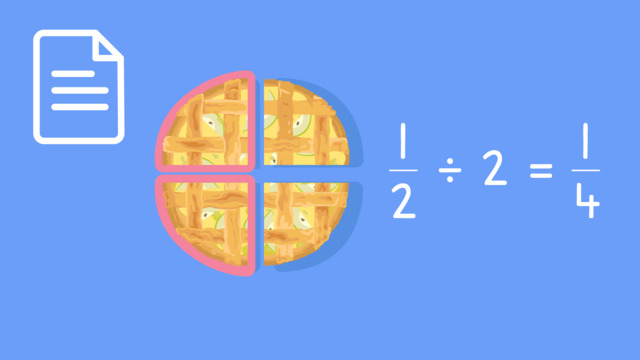Dividing Unit Fractions by Whole Numbers
- Dividing Unit Fractions by Whole Numbers
- Dividing Unit Fractions by Whole Numbers Explanation
- How to Divide Fractions by Whole Numbers
- Dividing Unit Fractions by Whole Numbers – Example
- Dividing Unit Fractions by Whole Numbers— Guided Practice
- Dividing Unit Fractions by Whole Numbers – Application
- Dividing Unit Fractions by Whole Numbers – Summary
- Dividing Unit Fractions by Whole Numbers – Frequently Asked Questions
Learning text on the topic Dividing Unit Fractions by Whole Numbers
Dividing Unit Fractions by Whole Numbers
Dividing unit fractions by whole numbers is an important concept. Understanding this process builds on what you already know about division and fractions and is important for developing strong foundational skills in working with rational numbers, such as Ordering Rational Numbers.
A unit fraction is a fraction where the numerator (top number) is 1, and the denominator (bottom number) is a whole number. Examples include $\frac{1}{2}$, $\frac{1}{3}$ and $\frac{1}{4}$.
Dividing Unit Fractions by Whole Numbers Explanation
When we divide a unit fraction by a whole number, we find out how many of those fractions fit into one part of the whole. This process can be thought of as splitting a unit fraction into smaller, equal parts as identified by the whole number.
How to Divide Fractions by Whole Numbers
There are logical steps you can take to divide unit fractions by whole numbers.
- Identify the Fraction and the Divisor: Identify the unit fraction and the whole number you're dividing by.
- Divide the Fraction: Divide the unit fraction into as many equal parts as the whole number indicates.
- Determine the New Fraction: Each part of the split unit fraction becomes a smaller unit fraction, because you’re dividing the unit fraction into smaller, equal parts.
It is important to understand that when dividing a unit fraction by a whole number, your answer will be smaller than what you started with. This means the new denominator will be a bigger number as a result.
Dividing Unit Fractions by Whole Numbers – Example
Let's explore this concept with a detailed example.
Example 1: Dividing $\frac{1}{4}$ by 3
Identify the Unit Fraction and Divisor:* The unit fraction is $\frac{1}{4}$ and the divisor is the whole number 3.
Divide the fraction: Imagine a pie cut into 4 equal parts. Take one of these parts ($\frac{1}{4}$). Now divide this $\frac{1}{4}$ into 3 further equal parts.
Determine the new fraction: Each of these new parts is a smaller fraction of the original quarter piece. After dividing, each of the 3 smaller sections is $\frac{1}{12}$ of the whole pie.
Dividing Unit Fractions by Whole Numbers— Guided Practice
This time, we will walk through the steps together to divide $\frac{1}{8}$ by 3.
Dividing Unit Fractions by Whole Numbers – Application
Let’s apply what we’ve learnt with some exercises:
Dividing Unit Fractions by Whole Numbers – Summary
Key Learnings from this Text:
Dividing unit fractions by whole numbers helps us understand how to split a fraction into smaller, equal parts.
The result of this division is always a smaller unit fraction.
Visualisation tools like pie charts and fraction bars can aid in understanding this concept.
Here are the steps you should follow in a simple table:
| Step | Description | Example: Dividing $\frac{1}{8}$ by 3 |
|---|---|---|
| 1. Identify the Fraction and Divisor | Start with a unit fraction and the whole number you're dividing by. | Unit Fraction: $\frac{1}{8}$, Divisor: 3 |
| 2. Visualise the Division | Imagine a visual representation of the fraction. | Picture a cake cut into 8 equal slices. Focus on one slice $\frac{1}{8}$. |
| 3. Divide the Fraction Further | Divide the unit fraction into as many equal parts as the number indicates. | Divide the $\frac{1}{8}$ slice of the cake into 3 smaller, equal parts. |
| 4. Determine Each New Part | Each new part represents a smaller fraction of the whole. | Each part is $\frac{1}{24}$ of the entire cake. |
Continue practising this concept by exploring Dividing Whole Numbers by Unit Fractions Using Models.
 Do you want to learn faster and more easily?
Do you want to learn faster and more easily?





















